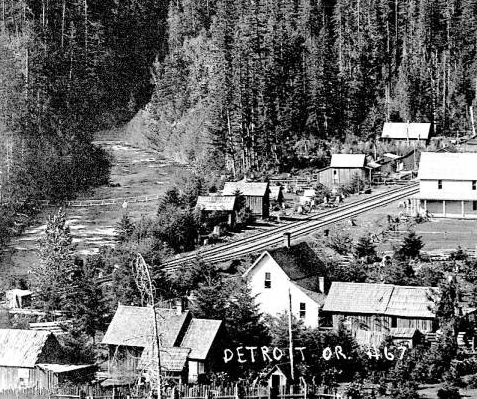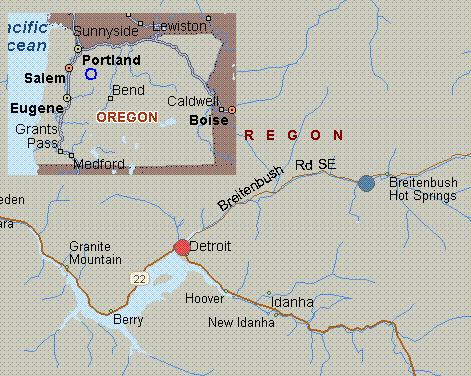The original name of the settlement was “Coe”. In October, 1891, “Detroit” received its new name with the founding of a Post Office, and the significant number of residents from Michigan who were living in the area.
Detroit is located approximately 50 miles east of Salem, Oregon, at about 1680′ elevation on the North Fork of the Santiam River. For many years it was only accessed by railroad (constructed in 1889) and was intended for the rail to be extend through the state to Boise, Idaho. The old town prospered from logging, fishing, and the great outdoors. By 1907, it had a population of 53 residents, and in 1926 road access was completed from Salem.

From the 1930’s until 1941, it was home to the CCC (Civilian Conservation Corps – Camp F-20) which was located one mile east of town. Detroit had service stations, a post office, schools, stores, taverns, a church, a hotel, a railroad station, and the Canyon Movie Theater (1947-1952). It also had regular bus service. The population in 1945 grew to 250 residents. By 1949 the community had an active fraternal order of Eagles (FOE).
The Army Corps of Engineers selected the site of the Detroit Dam in the 1930’s. The dam would put the town 100 ft under water. After WWII, a cease building order on the town site expired and construction of the dam commenced on April 1, 1949. At the time, it was the 4th highest concrete dam in the world with dimensions of 463′ high and 1523′ long, and cost $70,000,000 to build.
At peak construction, in 1950, there were 3,000 workers on the project. Worker housing was named Camp Mongold, with dorms for 800 single men and accommodations for 100 trailers. It would eventually house 1,200 people. Many contractors did not accept this housing, and alternate residences were constructed in Mill City for officials and employees.


